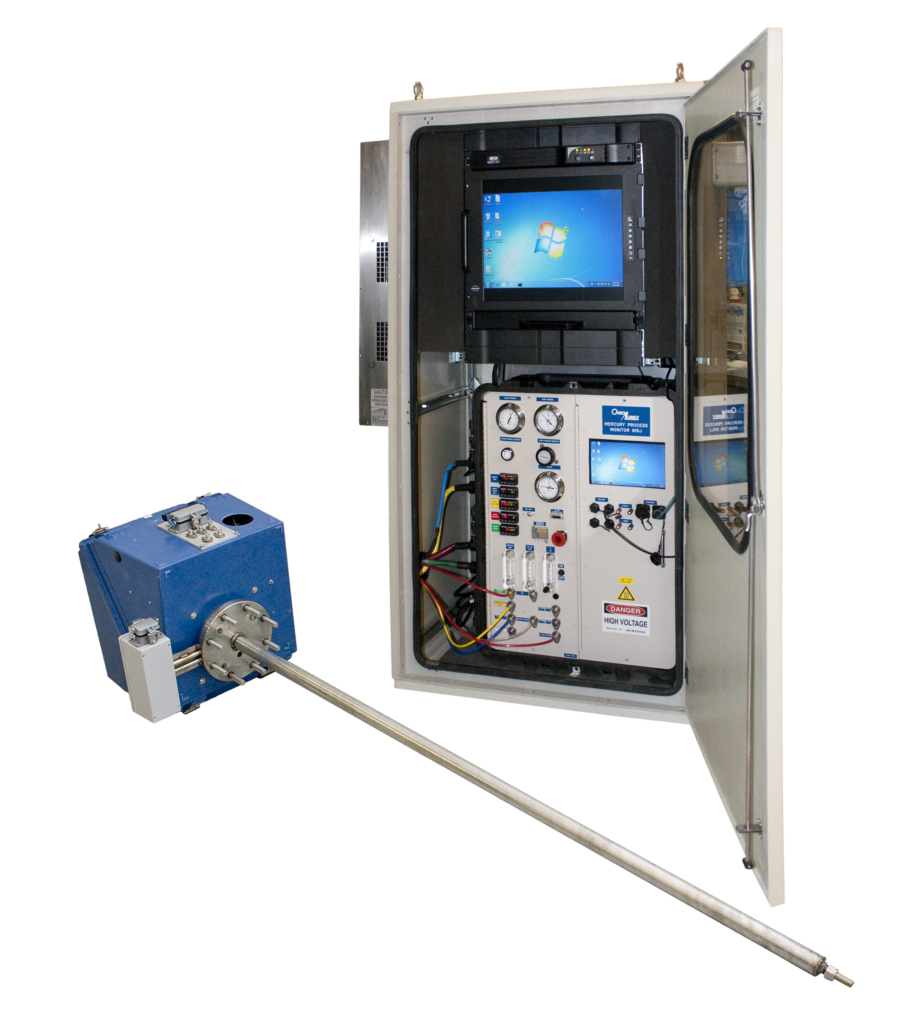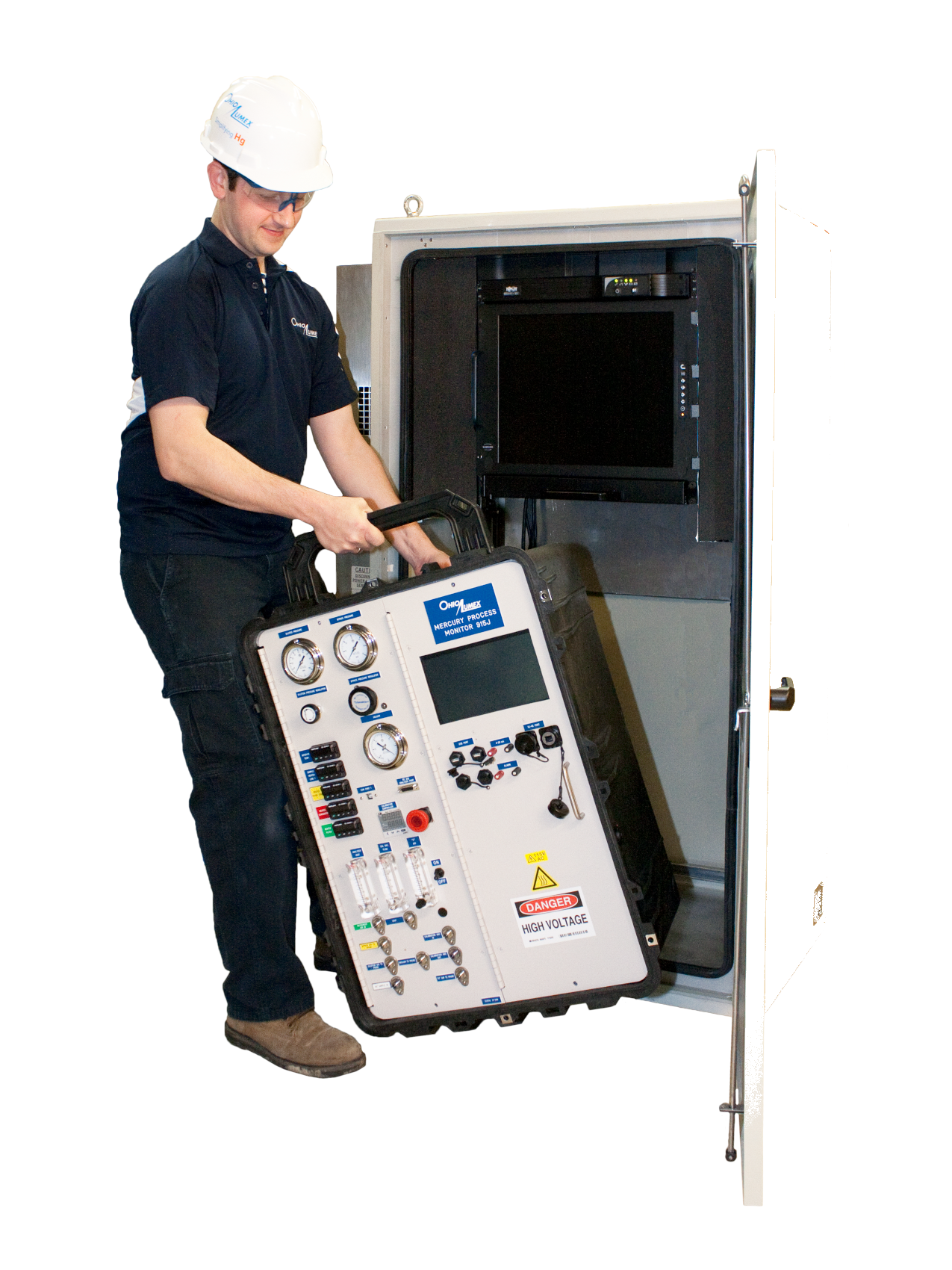Traditional mercury (Hg) continuous emissions monitoring systems (CEMs) face significant challenges due to the extremely low concentrations of Hg in flue gas, interference from higher-concentration gases like NOx and SOx, and the difficulty of sampling after control technologies. These systems rely on long, heated umbilical lines to transport reactive Hg, which can lead to measurement bias if not properly maintained, and are prone to burnout and expensive replacements.
Moisture and acid gases further complicate monitoring, often requiring dilution probes and ppt-level sensitivity that many analyzers struggle to achieve. Additionally, only elemental mercury is detectable by these instruments, necessitating highly reliable converters to process oxidized forms—a common point of failure. With large, rack-mounted analyzers requiring temperature-controlled enclosures and complex maintenance, these systems demand highly trained technicians—whose turnover and steep learning curve compound the operational burden.
To read more on these challenges, see this article.
With all of these challenges, PS 12B sorbent traps have gained popularity for their flexibility, simplicity, and cost-effectiveness. They handle load cycling with ease, avoid interferences through customization for plant conditions, and offer averaged emissions data rather than disclosing volatile peaks. However, their main limitation is the delayed feedback from lab analysis.
BUT, DON’T FORGET THE 915J!!
The 915J is different from traditional Hg CEMs!

The 915J is a real-time Hg Process Monitor designed to perform continuous emissions mercury monitoring for point source emissions (stacks). Over 15 years of research, development, extensive testing, and continuous improvement have resulted in an innovative design focused on high reliability, low maintenance, ruggedness, ease of use, and flexibility.
Among the features that make the 915J unique in the industry is its ability to place all equipment in close proximity to the monitoring location, significantly reducing the length of umbilical lines from the test port to the monitor. The self-contained, temperature-controlled NEMA 4X enclosure allows this flexibility and greatly reduces up-front capital expenditures. In addition to major installation cost savings, shorter umbilical lines minimize Hg sample loss, improve system calibration, and reduce long-term maintenance and operating expenses.
We also understand how important long-term maintenance and support are. That’s why the 915J was designed with serviceability in mind. Features like remote monitoring and troubleshooting, infrequent, easy replacement of consumables (quarterly is typical, depending on flue gas conditions), and a modular design all contribute to a smooth, user-friendly experience.
Instead of waiting days—or even weeks—for a technician to come on-site, diagnose the problem, order parts, and service the instrument, the 915J Control Module is designed to be easily disconnected, brought to your shop, or packed and shipped for service. To minimize downtime and maintain data availability, Ohio Lumex can overnight an alternate Control Module to the plant for temporary use while the other unit is being serviced.

This approach allows us to offer exceptional customer service and maintain outstanding data availability. To date, Ohio Lumex continuous mercury monitors have accumulated millions of operating hours with 98% data availability. The quality of that data is backed by over 15 years of simultaneous sorbent trap validation. The 915J is proven, time-tested, reliable, and cost-effective.
Rental units are also available! Contact us for a quote. Or, if you’re ready to take the leap and purchase this cost-effective mercury monitor, take advantage of our flat-rate rental program, where you can rent a monitor at a discounted flat rate for as long as it takes us to manufacture and install your permanent system—no need to worry about lead times!
It’s a win-win!
To read why adding a Mercury Process Monitor to your mercury control strategy makes sense, please see this post.
